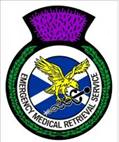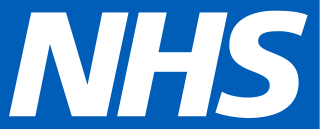
A home birth is a birth that takes place in a residence rather than in a hospital or a birthing center. They may be attended by a midwife, or lay attendant with experience in managing home births. Home birth was, until the advent of modern medicine, the de facto method of delivery. The term was coined in the middle of the 19th century as births began to take place in hospitals.

Westmead Hospital is a major teaching hospital in Sydney, Australia. Opened on 10 November 1978, the 975-bed hospital forms part of the Western Sydney Local Health District, and is a teaching hospital of Sydney Medical School at the University of Sydney.

A neonatal intensive care unit (NICU), also known as an intensive care nursery (ICN), is an intensive care unit (ICU) specializing in the care of ill or premature newborn infants. The NICU is divided into several areas, including a critical care area for babies who require close monitoring and intervention, an intermediate care area for infants who are stable but still require specialized care, and a step down unit where babies who are ready to leave the hospital can receive additional care before being discharged.
Pediatric nursing is part of the nursing profession, specifically revolving around the care of neonates and children up to adolescence. The word, pediatrics, comes from the Greek words 'paedia' (child) and 'iatrike' (physician). 'Paediatrics' is the British/Australian spelling, while 'pediatrics' is the American spelling.

The British Columbia Ambulance Service (BCAS) is an ambulance service that provides emergency medical response for the province of British Columbia, Canada. BCAS is one of the largest providers of emergency medical services in North America. The fleet consists of more than 500 ground ambulances operating from 183 stations across the province along with 80 support vehicles. Additionally, BCAS provides inter-facility patient transfer services in circumstances where a patient needs to be moved between health care facilities for treatment. BCAS also operates a medical evacuation program that utilizes both fixed-wing and rotary aircraft.

NSW Ambulance, previously the Ambulance Service of NSW, is an agency of NSW Health and the statutory provider of pre-hospital emergency care and ambulance services in the state of New South Wales, Australia.

Newborn transport is used to move premature and other sick infants from one hospital to another, such as a medical facility that has a neonatal intensive care unit and other services. Neonatal transport services such as NETS use mobile intensive care incubators fitted with mechanical ventilators, infusion pumps and physiological monitors capable of being used in a mobile environment. These transport systems seek to emulate the environment of a neonatal intensive care and permit uninterrupted care to occur in a referring hospital and then during the journey by road or air ambulance. Power and medical gas supplies are carried within the system as well as making use of external supplies; as available. Infant transport systems commonly weigh over 100 kg and present a challenge to vehicle operators in terms of weight, manual handling, crashworthiness and power consumption.

Montreal Children's Hospital is a children's hospital in Montreal, Quebec, Canada. Founded in 1904, it is affiliated with the McGill University Health Centre (MUHC) and McGill University, Faculty of Medicine.
Hospital emergency codes are coded messages often announced over a public address system of a hospital to alert staff to various classes of on-site emergencies. The use of codes is intended to convey essential information quickly and with minimal misunderstanding to staff while preventing stress and panic among visitors to the hospital. Such codes are sometimes posted on placards throughout the hospital or are printed on employee identification badges for ready reference.

Nepean Hospital is a 520-bed teaching hospital. providing tertiary referral services for the Nepean Blue Mountains Local Health District. Nepean Hospital is located at the base of the Blue Mountains in Kingswood, New South Wales, Australia.

The Emergency Medical Retrieval Service (EMRS) is part of ScotSTAR retrieval service. The EMRS provides aeromedical critical care retrieval and pre-hospital care to people in Scotland in the form of two retrieval teams. The service provides patients in remote and rural areas with rapid access to the skills of a consultant or senior doctor in emergency medicine, intensive care medicine or anaesthesia, and facilitates transfers to larger, better equipped urban hospitals. The EMRS functions supplementary to the regular Scottish Ambulance Service Air Ambulance service. Unlike air ambulance services in other parts of the UK, EMRS has no dedicated aircraft but both EMRS North and West are funded by the Scottish Government. The EMRS has featured on the Channel 5 documentary series Highland Emergency, which charts the work of rescue services in the Scottish Highlands.
The Canadian Perinatal Network (CPN) is made up of Canadian researchers who collaborate on research issues relating to perinatal care. The network commenced in September 2005, and includes members from 25 tertiary perinatal units. CPN will enable health care professionals, researchers, and administrators to participate actively in clinical, epidemiologic, health services, health policy, and informatics research aimed at improving the effectiveness and efficiency of perinatal care.
Early postnatal hospital discharge generally refers to the postpartum hospital discharge of the mother and newborn within 48 hours. The duration of what is considered "early discharge" varies between countries from 12 to 72 hours due to the differences in average duration of hospital stay. The World Health Organisation (WHO) recommends healthy mothers and newborns following an uncomplicated vaginal delivery at a health facility to stay and receive care at the facility for at least 24 hours after delivery. This recommendation is based on findings which suggest that the first 24 hours after giving birth poses the greatest risks for both the mother and newborn.
SAAS MedSTAR is the specialist emergency medical retrieval service for the state of South Australia. MedStar is operated by SA Health through the SA Ambulance Service and is designed to respond to trauma, medical and disaster emergencies anywhere within the state. MedSTAR Kids is the paediatric and neonatal service provided by MedSTAR.
Children's Emergency is a British television documentary series. It follows the Children's Acute Transport Service, the intensive care retrieval service connected to the nationally acclaimed Great Ormond Street Hospital in London, which is dedicated to stabilising and transporting critically ill children from peripheral hospitals to specialist paediatric intensive care units.

The Children's Acute Transport Service (CATS) is a publicly funded specialised regional intensive care transport service for critically ill children. CATS is the busiest Paediatric Intensive Care Transport Service in the UK and covers the 50 District General Hospitals in the North Thames and East Anglia regions of England. CATS is part of the Great Ormond Street Hospital for Children NHS Foundation Trust.

The Children's Air Ambulance (TCAA) is a charity-funded air ambulance service that transfers critically ill children from local hospitals to specialist paediatric centres throughout Great Britain. It also moves specialist teams and equipment to local hospitals when a child is too sick to travel. The service also sometimes acts as a patient transport service, returning children and families home after treatment. It was founded in 2005, and has been operated by The Air Ambulance Service charity since 2011. More than 400 missions have been performed since the service began. The number of missions is anticipated to rise to more than 600 per year with the launch of the new helicopters.
Scottish Specialist Transport and Retrieval (ScotSTAR) is the Scottish national service for adult, paediatric and neonatal patients. The service is run by the Scottish Ambulance Service and brings together NHS Scotland's three specialist transport and retrieval services: the Scottish Neonatal Transport Service (SNTS), the Transport of Critically Ill and Injured Children Service and the Emergency Medical Retrieval Service (EMRS). The service operates from a bespoke base near Glasgow and expects to be able to cater for 2,200 critically ill children and adults every year.

Herbert Barrie, was a British consultant paediatrician and a leading figure in neonatology. He was a pioneer in the emerging specialty of paediatrics and neonatal medicine; and he developed one of the first neonatal intensive care units in London.

British Association of Perinatal Medicine known as BAPM, is a charitable organization that was founded in Bristol in 1976 that is most notable for being a pressure group to advance the standards of perinatal care within the United Kingdom by a dedicated core of professional physicians who are accredited by examination.














